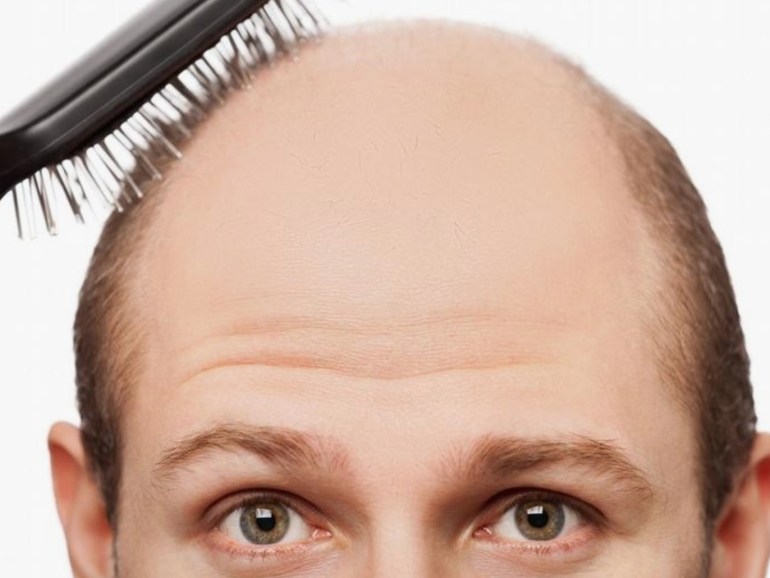Hair transplantation techniques have undergone several developments, and the use of robots will reduce the costs of this procedure.
In this report, which was published in the French newspaper "Le Figaro", the writer Pauline Lena said that hair loss is a natural phenomenon that affects one out of two men in their forties, and 4 out of 5 men after the age of eighty.
The problem of androgenic alopecia is related to the activity of some male hormones that accelerate the process of hair regeneration until the regenerative capacity of the hair follicle is depleted.
With regard to hair care products and medicines, if current "treatments" are able to show greater efficacy and less odor compared to camel urine or goose dung that were previously used treatments for this problem, their results remain unnoticed and sometimes accompanied by undesirable effects.
According to Professor Frank Doughty, Head of the Plastic, Reconstructive and Aesthetic Surgery Unit at the University Hospital of Nantes, the demand for surgery to solve this problem "continues to increase, especially since the hair transplants performed today offer an effective solution".
On average, each follicle can produce 25 hairs for life, and the author stated that some hairs can escape the "problem" of the testosterone hormone because hair follicles are insensitive to it and continue to produce hair for life.
Since the era of the ancient Egyptians, surgeons have tried to transfer these areas of permanent hair to areas of baldness.
The oldest scalp surgery technique involves removing the crown area and then extending the sections in which the hair grows. It is an inexpensive surgery but is limited to cases where the baldness is in a small area.
The balloon skin stretching technique was also developed but is painful and is no longer used today.
In the 1950s, surgeons developed hair follicle grafts, which met with some success, in which hairs are grown in bundles of 10 hairs.
It is the most practiced today.
The more expensive technique, called Follicle Unit Transplant (FUT), is to remove a strip of scalp in the crown area and extract the micro-grafts that allow a maximum of 3 or 4 hairs to be implanted at a time, while the patient is under general anesthesia.
Professor Doughty stated that this process "could last from 5 to 6 hours".
Hair transplantation in Turkey attracts Arabs and Europeans (Al-Jazeera)
Recent surgery
In recent years, surgeons have been able to extract each hair follicle before transplanting it individually, ensuring a scar-free surgical intervention thanks to the removal and implantation tools that create tiny holes in the scalp.
The result depends on the skill and ability of the surgeon to focus: depending on the level of baldness, you will need to transplant up to 4000 grafts in one or two sessions.
It is also necessary to know how to properly distribute the types of hair grafts and direct the hairs to be transplanted so that the hair looks natural.
These operations are particularly time consuming, and many surgeons choose to surround themselves with experienced professionals who can participate in the process without getting tired.
FUE technique and DHI technique performed under local anesthesia are also used, and their costs are usually lower.
Turkey has become the destination for men who suffer from baldness problems, as serious clinics offer these offers for less than 3000 euros, by doing a complete correction of baldness.
This type of operation is part of medical tourism, as the costs of the operation include hotel accommodation and plane tickets, which are less expensive compared to other European countries.
As it contributes to the economy of Turkey about one billion euros annually.
Planting robots
Since labor cost and operation time are the main reason for attracting more clients, implantation robots can be programmed to reduce cost and perform this task, as these devices equipped with AI-enhanced imaging tools can be programmed according to the needs of each patient.
The invented algorithm guides the articulated arms of the robot that precisely and tirelessly numb each area, extract the follicular units and then implant them in record time, ensuring that hair grafts remain.
By doubling the number of patients treated each day, the heavy price of these robots could be quickly compensated for.
The average lifespan of hair is 5 years, some can stay in place for up to 7 years (Deutsche Welle)
The hope of stem cells
An American study showed that the hair follicles of people who suffer from baldness are not dead, but rather in a coma, especially the onset of baldness.
All hopes rest on the efforts to search for the miracle product that is able to revive the activity of stem cells that have lost the ability to transform into progenitor cells that allow hair to be constantly renewed.
On the other hand, injecting stem cells directly into the scalp does not seem feasible as it causes many problems and may contribute to promoting the development of cancerous tumors.
So scientists are trying to isolate compounds that are able to stimulate the regenerative activity of stem cells found in hair follicles.
The average lifespan of hair is 5 years, and some can stay in place for up to 7 years
A Chinese study published in 2020 confirmed that regular application of an extract containing compounds removed from fat stem cells can increase hair density and quality in patients with androgenetic alopecia.
On the other hand, the results should be confirmed in more patients, as the study included only 38 people, but it looks promising.

